6 Popular Weighted Blanket Fillings - Which One to Get?
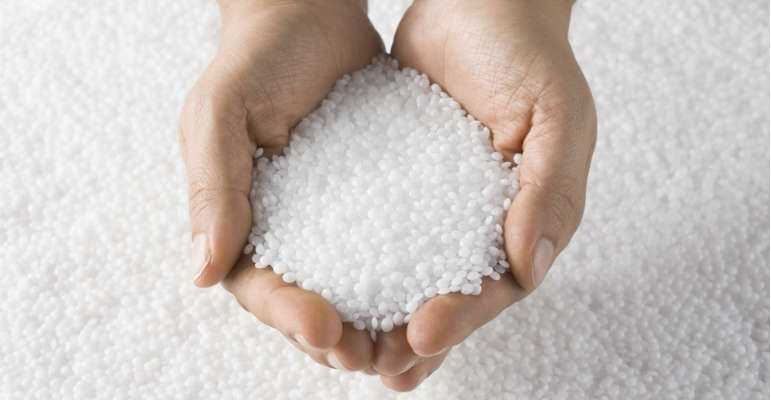
Weighted blankets have become extremely popular over the past year. Celebrity endorsements and bold claims that include curing insomnia, relieving symptoms of Restless Leg Syndrome, and easing sensory issues related to the autism spectrum, have propelled the weighted blanket to stardom.
Using the science of Deep Touch Pressure, weighted blankets soothe the nervous system with gentle, yet firm pressure, stilling the mind and body, and making it easier to drift into a restful sleep.
The health benefits of weighted blankets may be indisputable according to some research, but they can come with a hefty price tag. Weighted blankets almost always cost over $100 and can even exceed $300.
| Recommended Weighted Blankets | Our Rating | ||
|---|---|---|---|
| Baloo Weighted Blanket | Best Overall | Check price | |
| LUXOME Weighted Blanket | Best Premium | Check price | |
| BABO Cooling Weighted Blanket | Best Cooling | Check price | |
| Gravity Blankets | TIME Magazine’s Best Inventions of 2018 | Check price |
Although purchasing a high quality weighted blanket can be a justified investment in an individual’s health and wellness, many Americans are looking for more budget-friendly options, such as making their own weighted blanket.
Whether a consumer is seeking the best weighted blanket or the best materials with which to make their own diy weighted blankets, it is important to consider the different types of fillers available so that one can make an educated and informed decision.
What are Weighted Blanket Fillers?
The term “fillers” refers to the weights which are used to fill weighted blankets, making them heavy enough to stimulate Deep Touch Pressure points throughout the body. Good weighted blankets usually consist of several square pockets filled with weights and stitched together to make a blanket. This pocketed design helps to evenly distribute the weight all over the body and prevents the fillers from sliding to one side.
There are several different options when selecting the right weighted blanket filler.
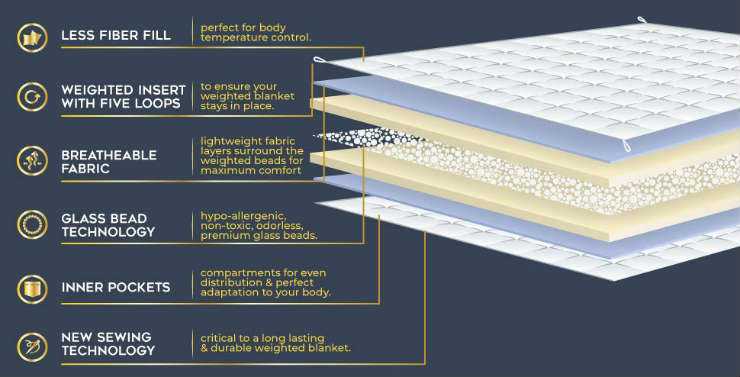
Some of the most popular options include plastic poly pellets, micro-glass beads, steel balls or beads, organic grains and beans, and sand. In this guide, we will examine different filler options available, as well as the benefits and drawbacks of each option.
What Types of Fillers are There for Weighted Blankets?
Plastic Poly Pellets
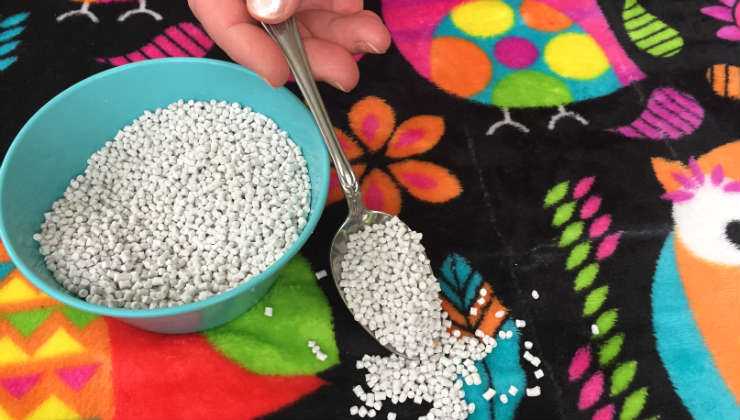
Plastic poly pellets are one of the most commonly used fillers for weighted blankets. This material is also commonly used in stuffed animals’ or dolls’ bases to help them sit upright (remember beanie babies?).
Plastic poly pellets are made from 100% polypropylene and are considered to be a completely safe level 5 plastic.
Also referred to as weighted stuffing beads, this material is flexible and easy to shape once it is sewn into fabric. This makes it great for weighted blankets, which need to contour to the body to effectively influence the nervous system.
Poly pellets are also non-toxic and completely safe to wash.
For an item that is going to be in direct contact with the skin, it is important to choose safe, non-toxic materials. Since a regularly used blanket will also require regular cleaning, it is helpful to have materials that can be submerged in water with no adverse reactions.
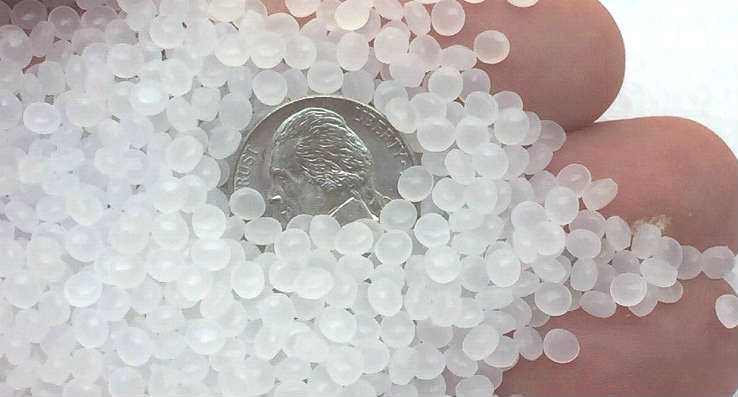
Poly pellets can be found at nearly any craft store, as well as online retailers like Amazon and Etsy. Usually, purchasing these pellets in bulk is the best value, which is good news for weighted blanket consumers since weighted blankets can weight up to 50 pounds.
In rare instances, individuals with extreme skin or noise sensitivities may not be able to tolerate poly pellets. Although they are not considered noisy, the rustle of the pellets inside the fabric can be heard if it is close to ear.
Sometimes this filler can be a bit lumpy or uneven, depending on how well they are made.
For the extremely sensory-sensitive individual, this uneven texture may feel abrasive.
Some fabrics work especially well with poly pellets, such as fleece or minky fabrics. Due to the soft texture of these materials, whatever lumps or roughness the plastic pellets may present will bill be better disguised.
Cotton stuffing packed in with the poly pellets can reduce their noise and make the blanket feel more smooth.
Micro Glass Beads
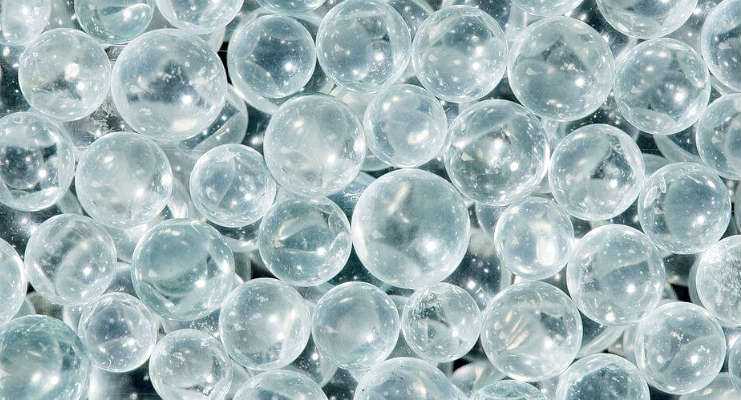
Micro glass beads are considered one of the higher-end weighted blanket fillers. These tiny glass fillers resemble white sand or salt crystals in appearance. These glass beads are perfectly smooth, making them a great option for individuals bothered by the texture of plastic poly pellets.
Generally, they are a little more expensive than poly pellets, but because they are heavier than plastic pellets, the blanket will not require as many units.
A 20-pound blanket made with plastic poly pellets will have 2 to 3 times more individual units than a 20-pound blanket filled with micro glass beads. Often, this difference in price point is offset by the lesser number of individual weights. They might cost more, but since the blanket will not need as many, it evens out.
Since fewer micro glass beads are necessary to create a weighted blanket, the blanket will be thinner and less bulky.
Micro glass beads are a great option for those with severe auditory and sensory sensitivities. They are also a great option for individuals who desire the DTP effects of a weighted blanket without added bulk. Consider micro-glass beads for an environmentally and sensory friendly option.
Glass beads are cool to the touch and typically used in the best cooling weighted blankets.
Steel Shot Beads
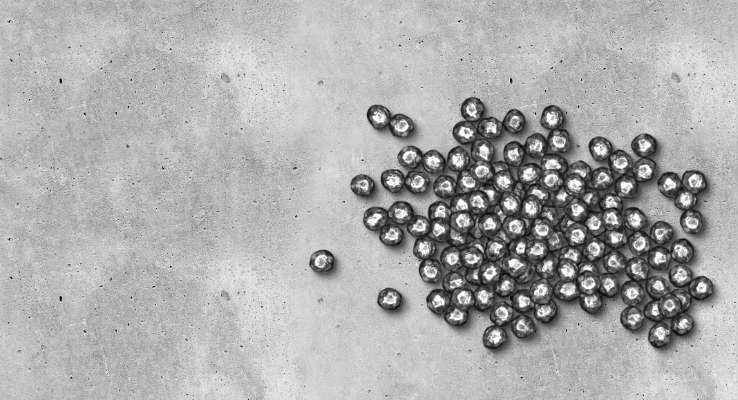
Steel shot beads are another common filler for weighted blankets. Even larger and heavier than glass beads, steel shot beads have a completely smooth, round surface ideal for keeping weighted blankets comfortable and calming.
These beads have many benefits:
First, since they are larger in size, it takes fewer units of beads to achieve the desired weight.
Second, their size makes them less likely to leak through the stitches of the blanket. Leaks are not common in well-made weighted blankets, but on the rare occasions that they can occur, they can be quite messy and difficult to refill and mend. Any fillers that help deter possible leaks are a welcome benefit.
Third, steel shot beads are extremely durable. They are made of steel, after all. Steel beads never wear out. Their impeccably smooth surface also prevents them from collecting dirt, keeping the inside of the blanket clean and virtually allergen-free.
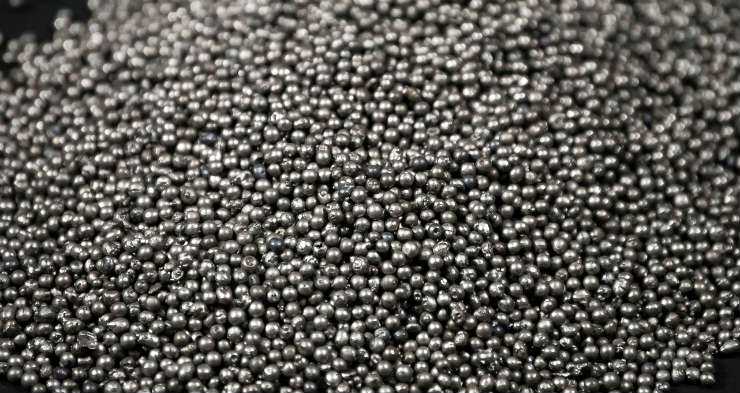
When the blanket does need to be thrown in the washing machine, just follow our instructions on how to wash a weighted blanket.
Steel shot beads do not pose any problems, they are completely washing machine-safe too.
The only potential drawback to steel shot beads is that they can be a little noisier than glass beads and plastic-pellets. Usually, this only affects those with auditory sensitivities.
If the noisy steel shot beads can create a nuisance to the consumer, consider a weighted blanket that also incorporates cotton stuffing in the lining of the filled pockets. This will help muffle the noise and can also add a layer of comfort.
Steel shot beads are a cost-effective option for weighted blankets, as well. They can be found online, or at big-box retailers such as DollarBead.com have bulk steel shot beads options at affordable, wholesale prices. This is a convenient option for craft enthusiasts who plan on making multiple weighted blankets to sell or give as gifts.
Overall, steel shot beads may be one of the best weighted blanket fillers, as long as the user does not have acute auditory sensitivity.
Sand

Sometimes, although not very often, sand is used as a filler for weighted blankets. It is an inexpensive commodity and also easy to get.
However, its price is pretty much the only advantage to using sand in weighted blankets. Many people may assume that sand is an organic addition to making weighted blankets, but most sand available for craft use is only semi-organic material.
Craft sand has a tendency to clump, especially when it gets wet.
Sand does not disperse as evenly throughout the blanket, either. It is difficult to evenly distribute weight in a blanket when sand is used as the filler.
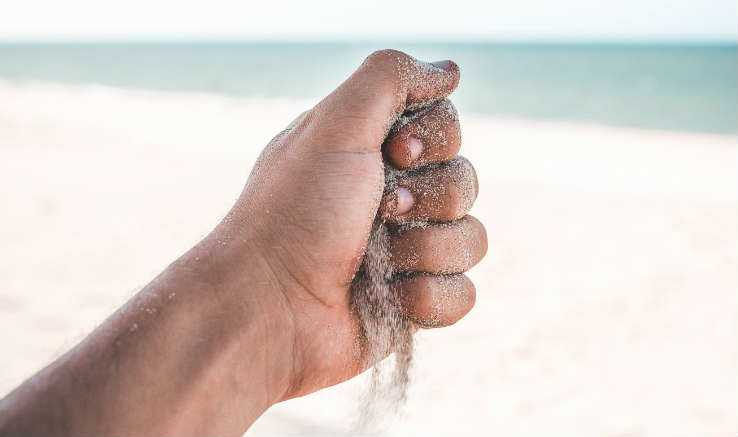
Washing and drying is also difficult, sometimes sand can clump so badly that the blanket really loses its shape after its first wash. Drying a weighted blanket with sand can be a monumental task. These blankets should be line dried, but it will take significantly longer to dry than blankets made with pellets or beads.
Keep in mind also that sand is more likely to leak through stitching than other materials. Sand is also quite messier than pellets or beads if there is a leak.
If sand is used as a filler, make sure that stitches are reinforced and consider sending it to a dry cleaner periodically for cleaning so that the hassle of washing and drying can be avoided.
Rice, Beans, and Other Grains as Fillers
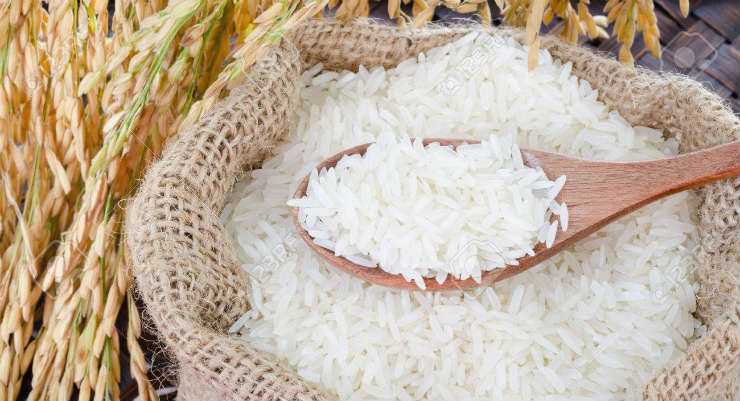
Sometimes dried foods such as rice, beans, corn barley, or pasta are used as fillers for weighted blankets. It is possible to achieve good weight with these items. Another advantage to dried foods is that they are very inexpensive and very easy to find.
The disadvantages to using food as fillers becomes apparent as the blanket begins to age or needs to be washed. First of all, food will deteriorate and is not a durable material.
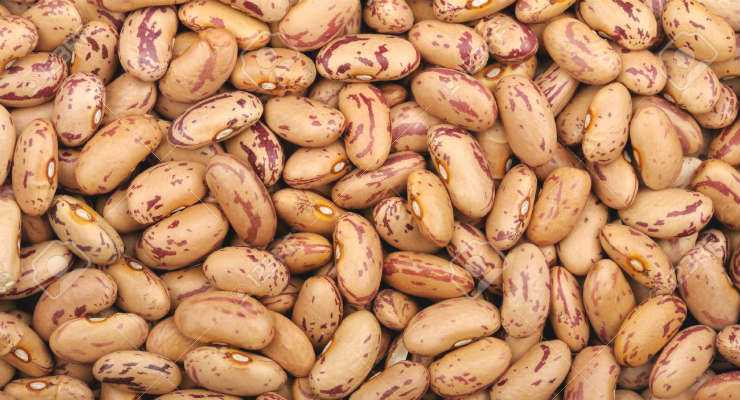
These items can grow mold, fungus, or even attract insects. As if moldy, infested fillers are not bad enough, eventually food will begin to break down and rot. The last thing a pricey health item, such as a weighted blanket, should contain is rotting, smelly food.
The second major problem with using rice, beans, and pasta as a filler is what happens when it gets washed.
Most of these items will expand as they absorb water, totally altering the shape and feel of the blanket. Not to mention, they will most likely retain the water they absorb without completely drying out. It is likely that the weighted blanket filled with food will remain a wet, moldy mess after the first wash.
For these reasons, we do not recommend using dried foods as filler in a weighted blanket. Try finding other inexpensive, accessible fillers that are better suited for the job!
Riverstones and Pebbles
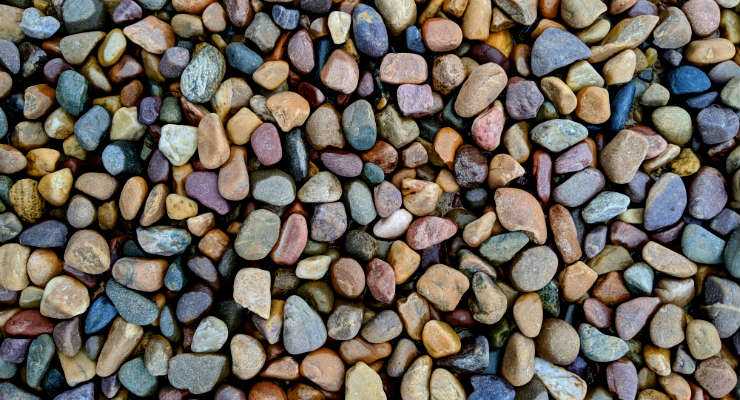
Another option for weighted blanket fillers are rocks, more specifically, river stones or smoothe pebbles.
These items can be found in nature for free, making them an alluring, budget-friendly choice. Keep in mind, though, that rocks may not be the most comfortable item to use in a blanket.
Even for an especially heavy blanket, the weight still needs to be evenly distributed. This means that the stones would need to be small and lightweight, similar in size so that some parts of the blanket are not heavier than others.
If small river stones or pebbles are used as blanket filler, make sure they are completely dried out before sewing them into the blanket’s lining. Any moisture will likely result in mold.
Also, try incorporating cotton stuffing into the pockets along with the pebbles. This will help keep the stones evenly distributed throughout the blanket, as well as add some padding for comfort.
Overall, pebbles may be a convenient and cost-effective option, but they may not be the most user-friendly, especially for individuals with sensory sensitivities.
The individual weight of the rocks may still be uncomfortable, even under the softest fabric. Consider micro glass beads or poly pellets for easier filling and comfort.
Safety - Should Plastic and Other Chemicals Be Avoided In Weighted Blankets?
The answer to this question is mostly a matter of preference. Some people prefer to avoid substances with any chemicals or artificial compounds, if possible.
Plastic poly pellets, for instance, contain polypropylene which is composed of trace amounts of toxins, fire retardants, and preservatives.
However, manufacturers who sell in the U.S. are bound by a strict set of laws and procedures that help ensure the product’s safety.
Plastic poly pellets are considered a safe material, especially since it is not being consumed. The product itself will not even make contact with the skin, since it would be used in the lining of the blanket.
Still, the choice of filler is a personal decision, and there are chemical free alternatives, such as glass and steel.
Conclusion - Choosing Weighted Blanket Fillers
Whatever filling is your pereference, there are other factors to consider when choosing a weighted blanket for your needs. Do your own research, there are plenty of materials and guides on this site. If curious for more details, look into recently published research available online.
